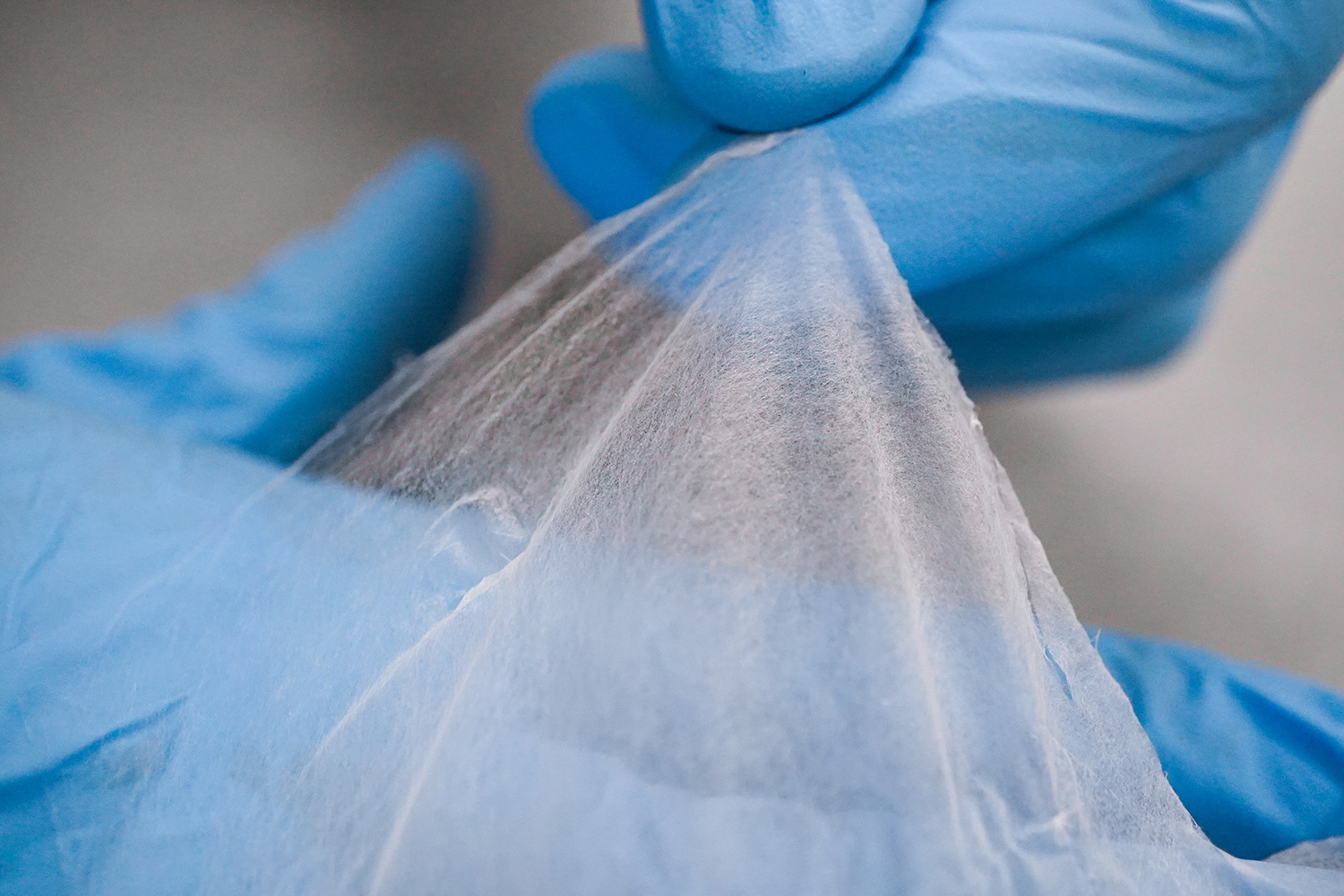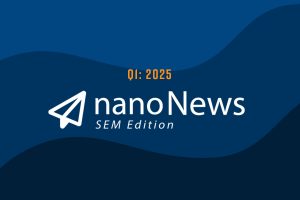What Are Nanofibers?
Nanofibers are ultrafine fibers with diameters typically ranging from a few nanometers (nm) to a few hundred nanometers. To put this in perspective, a nanometer is one billionth of a meter, and the width of a human hair is about 80,000 nm. Super small!
Nanofibers possess unique properties derived primarily from their nanoscale dimensions. They have a high surface area, high aspect ratio, and high surface area-to-volume ratio. They are very versatile and can be used to fabricate a variety of 3-dimensional structures with unique properties. Nanofibers have a significantly larger surface area per unit mass than bulk materials, making them suitable for applications where surface interactions are important. They also have a high length-to-diameter ratio, resulting in exceptional mechanical properties, including flexibility and strength. Many nanofibers and their resulting nanofibrous 3D structures exhibit a porous structure, which can be controlled and tailored for specific applications, such as lightweight or low-density materials, filters, medical devices, and tissue scaffolds.
Nanofibers can be fabricated from a wide range of materials, including polymers, ceramics, composites, and even natural materials like proteins and DNA, making them very versatile in different applications. Nanofibers can be fabricated using various techniques, including electrospinning, self-assembly, template-based synthesis, phase separation, and melt-blowing. Electrospinning is one of the most common methods in nanomaterial production, especially for nanofibers. Electrospinning involves using an electric field to draw a polymer solution or melt it into a thin jet that solidifies into nanofibers as it is deposited onto a collector.
Applications
Nanofibers have found applications across various industries and fields, including biomedical and healthcare, environmental remediation, textiles and apparel, electronics, and energy. Nanofibers are used in tissue engineering, drug delivery systems, wound dressings, and scaffolds for regenerative medicine. They are employed in air and water filtration, adsorption of pollutants, and removal of contaminants. Textiles and clothing use nanofibers for enhanced breathability, moisture management, and antibacterial properties. Nanofibers are utilized in flexible and conductive materials, as well as in sensors and electronic components. Nanofibers also play a role in energy storage devices, such as batteries and supercapacitors, as well as in photovoltaic materials and fuel cells.

Recent Advancements in Nanofibers
Several recent advances have been made in the use of nanofibers, especially in medical applications, drug delivery, tissue engineering, nanoelectronics, space explorations, energy storage and environmental applications.
Medical Applications
Nanofibers have made significant strides in the field of medicine. Researchers have developed nanofiber-based wound dressings that can accelerate wound healing by providing a conducive environment for tissue regeneration. A recent study in the journal “Acta Biomaterialia” (Kharaziha et al., 2021) discusses the use of electrospun nanofibers for wound healing applications.
Drug Delivery
Nanofibers are being explored as carriers for controlled drug delivery. They can release drugs at a controlled rate, improving patient compliance and reducing side effects. A notable example is the work published in “Advanced Drug Delivery Reviews” (Zhu et al., 2019), which discusses the use of nanofiber-based drug delivery systems.
Environmental Remediation
Nanofibers are being used to address environmental challenges, such as water purification and air filtration. Researchers are developing nanofiber-based membranes capable of efficiently removing pollutants. A study in “Environmental Science & Technology” (Xie et al., 2020) investigates the use of electrospun nanofiber membranes for water treatment.
Nano-Electronics
Nanofibers hold great promise in the field of electronics. They can be used to create flexible and stretchable electronic components, including sensors and conductive textiles. This could lead to innovations in wearable technology and human-machine interfaces. A publication in “Nature Nanotechnology” (Mannsfeld et al., 2010) explores this topic.
Tissue Engineering
Nanofibers are expected to play a crucial role in tissue engineering and regenerative medicine. Researchers are working on developing nanofiber scaffolds that mimic the extracellular matrix, promoting the growth of functional tissues and organs. For further reading, refer to the article in “Advanced Functional Materials” (Zhang et al., 2019) on nanofiber scaffolds for tissue engineering.
Energy Storage
Nanofibers are being investigated for energy storage applications, particularly in the development of advanced batteries and supercapacitors. Their high surface area and porosity make them ideal for improving the performance of energy storage devices. Look into the research published in “Science” (Xie et al., 2020) on nanofiber-based lithium-ion batteries.
Space Exploration
Nanofibers could find applications in space exploration due to their lightweight and strong characteristics. They could be used in the development of advanced materials for spacecraft and space suits, enhancing the durability and safety of space missions. For an example, check out the “ACS Applied Nano Materials” article (Tahalyani et al. 2021) on flexible electromagnetic shielding nanofibrous materials in space.
Conclusion
In summary, the field of nanofibers revolves around the fabrication and utilization of extremely small fibers with unique properties. These nanofibers have a broad range of applications and hold promise for future technological innovations across various industries. Nanofibers are a prime example of how nanotechnology enables the manipulation of materials at the nanoscale to achieve novel and beneficial outcomes.
References
- Kharaziha, M., Fathi, M., Edrisy, A., & Marashi, S. M. (2021). Nanofiber dressings containing essential oils for the treatment of different types of wounds: A review. Acta Biomaterialia, 126, 46-66.
- Zhu, Z., An, Z., & Chen, L. (2019). Advances in electrospun nanofibers for drug delivery. Advanced Drug Delivery Reviews, 143, 1-19.
- Xie, K., Wei, X., & Zhao, Y. (2020). Electrospun nanofiber membranes for effective air filtration. Environmental Science & Technology, 54(16), 10234-10248.
- Mannsfeld, S. C., Tee, B. C., Stoltenberg, R. M., Chen, C. V., Barman, S., Muir, B. V., … & Bao, Z. (2010). Highly sensitive flexible pressure sensors with microstructured rubber dielectric layers. Nature Nanotechnology, 5(10), 808-814.
- Zhang, L., Hu, J., Ju, Y., Li, C., & Mao, Z. (2019). Electrospun natural biomaterials for tissue regeneration and cancer therapy. Advanced Functional Materials, 29(44), 1903055.
- Xie, L., Li, R., & Ma, L. (2020). Electrospun nanofiber membranes for high-performance lithium-ion batteries. Science, 368(6489), 897-901.
- Tahalyani, J., Akhtar, M., & Kar, K. (2021). Heterolayered Composite of Carbon Nanofibers Sandwiched between Poly(ethylene terephthalate) and Polyurethane for Flexible Electromagnetic Shielding Application. ACS Appl. Nano Mater, 4(11), 12146–12157.








